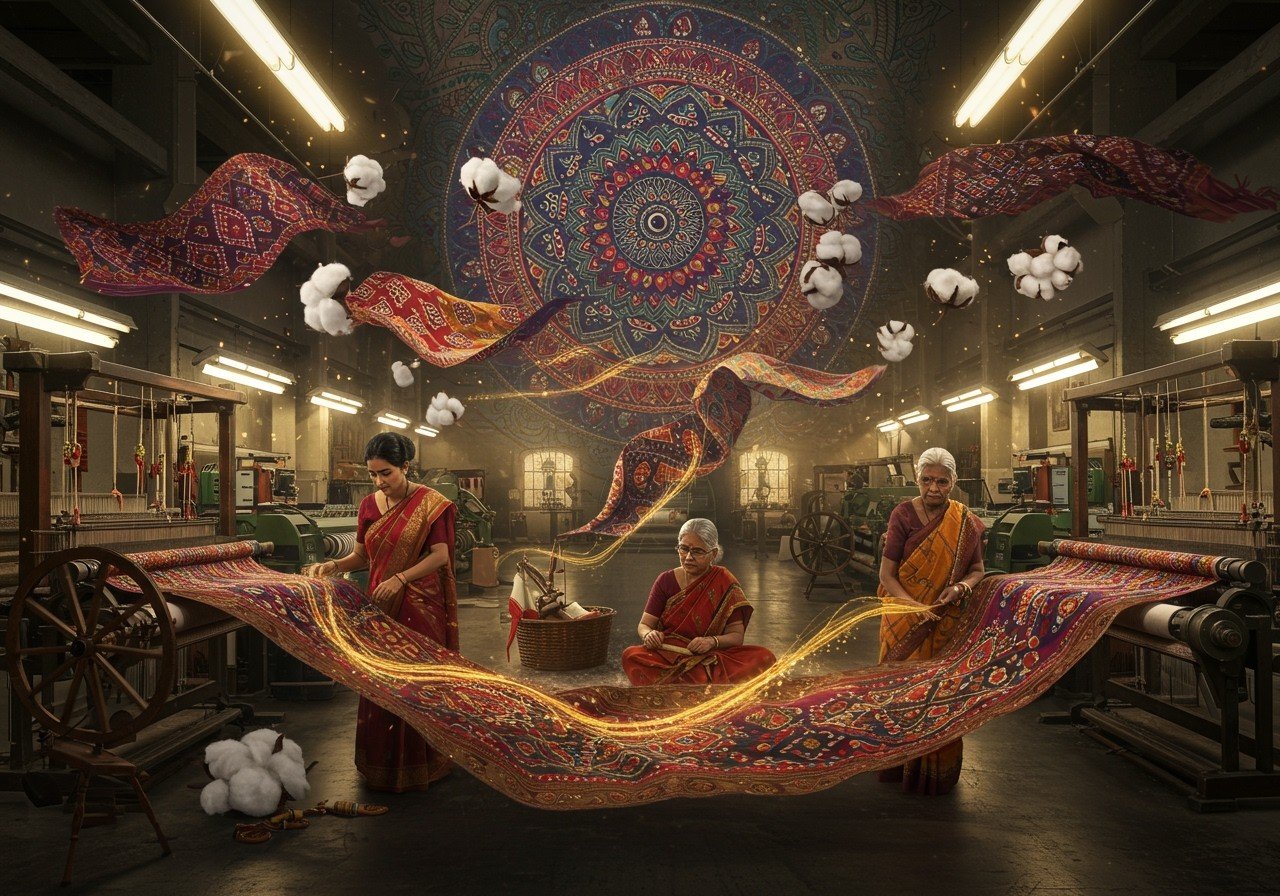
The Indian textile industry, a cornerstone of the nation’s economy, boasts a rich history intertwined with cultural significance. From ancient handloom traditions to modern manufacturing marvels, it contributes substantially to India’s GDP, employs millions, and fuels export earnings. Understanding the government’s role in shaping this sector is crucial to appreciating its potential. This article delves into the historical context, current landscape, challenges, and exciting opportunities within this vital industry.
A Historical Tapestry: From Handlooms to Modern Mills
India’s textile heritage dates back centuries, with handloom weaving forming the bedrock of its legacy. Textiles have always been integral to Indian culture and commerce. The colonial era ushered in industrialization, transforming production methods. Post-independence, India renewed its focus on developing this sector, implementing key policies to promote growth and modernization.
Government Policies: Weaving a Supportive Framework
The Indian government has implemented several key policies to bolster the textile industry:
- Production Linked Incentive (PLI) Scheme: Launched to incentivize the production of man-made fiber (MMF) apparel, fabrics, and technical textiles. It offers subsidies and aims to attract significant investments and generate numerous jobs, showcasing the government’s commitment to modernizing the sector.
- Technology Upgradation Fund Scheme (ATUFS): This scheme promotes modernization by providing capital subsidies for machinery, enabling businesses to adopt advanced technologies and boost productivity. It aims to reduce the sector’s reliance on imports and boosting innovation through the National Technical Textiles Mission (NTTM)..
- Scheme for Integrated Textile Parks (SITP): With the goal of establishing world-class textile manufacturing infrastructure, SITP supports the development of modern textile parks. These parks offer shared resources and facilities, fostering collaboration and efficiency.
- Textile Policy 2024: Encompasses capital subsidies, interest subsidies and power subsidies to improve and modernize the industry. It aims to create a conducive environment for growth and competitiveness. It has seen various investments already.
These policies are instrumental in strengthening the sector and fostering innovation.
Government Initiatives: Spinning Growth and Progress
Beyond policies, several initiatives drive growth in the textile sector:
- Samarth Initiative: A skill development program designed to equip individuals with the expertise needed across the textile value chain. This focus on skill enhancement ensures a competent workforce ready to meet industry demands.
- Cotton Mission: Launched with a substantial allocation to revitalize India’s cotton sector. It strengthens the foundation of the textile industry by focusing on improving cotton production and quality.
- PM Mega Integrated Textile Regions and Apparel (MITRA) Parks Scheme: An ambitious project aimed at establishing mega textile manufacturing parks. These parks will serve as hubs for production, attracting investment and creating employment opportunities.
- Export Promotion Councils (EPCs): Eleven EPCs work across various segments of the textile industry, organizing international textile shows and fostering collaborations. These initiatives promote market access and facilitate global trade.
These initiatives are strategically designed to enhance competitiveness and showcase Indian textiles on the global stage.
Discover premium cotton fabrics for various purposes at poojn.in.
Explore high-quality cotton cloths for rituals and ceremonies at poojn.in.
Challenges and Opportunities: Navigating the Textile Landscape
The Indian textile industry faces several challenges:
- Global Competition: Competition from other textile-producing nations requires continuous innovation and adaptation to maintain market share. This includes focusing on areas where India has a competitive edge, such as traditional textiles and handloom products.
- Raw Material Costs: Fluctuations in raw material prices, especially cotton, pose a challenge. The government’s initiatives to support cotton farmers and promote sustainable cotton production are crucial in addressing this.
- Sustainability Concerns: Growing environmental awareness necessitates a shift towards sustainable practices. Adopting eco-friendly technologies and materials is essential for long-term viability.
However, these challenges also present opportunities:
- Technological Advancements: Embracing innovation in areas like smart textiles and digital printing can create new product categories and enhance competitiveness. This includes investing in research and development and promoting the adoption of new technologies by textile manufacturers.
- Global Market Expansion: Tapping into new markets and diversifying export destinations can drive growth. This requires strategic marketing efforts and participation in international trade fairs to showcase Indian textile products.
- Sustainable Practices: Adopting sustainable production methods can enhance India’s appeal in the global market. Consumers are increasingly conscious of environmental impact, and sustainable textiles can gain a competitive edge.
Find a variety of colored cotton threads for rituals and crafts on poojn.in.
Poojn.in: Supporting India’s Textile Heritage
Poojn.in is proud to support India’s textile traditions by offering a range of products that align with government initiatives for textile preservation. We provide artisans and manufacturers with easy access to high-quality materials, contributing to the growth and sustainability of this vital sector.
Discover traditional materials for rituals and ceremonies on poojn.in.
A Shared Future: Weaving Progress Together
India’s textile industry stands at a crossroads, poised for growth and transformation. By embracing innovation, prioritizing sustainability, and fostering collaboration between the government, industry stakeholders, and artisans, we can ensure a vibrant future for this essential sector. Poojn.in is committed to playing its part in supporting this journey, empowering artisans, and celebrating the rich tapestry of Indian textiles.


